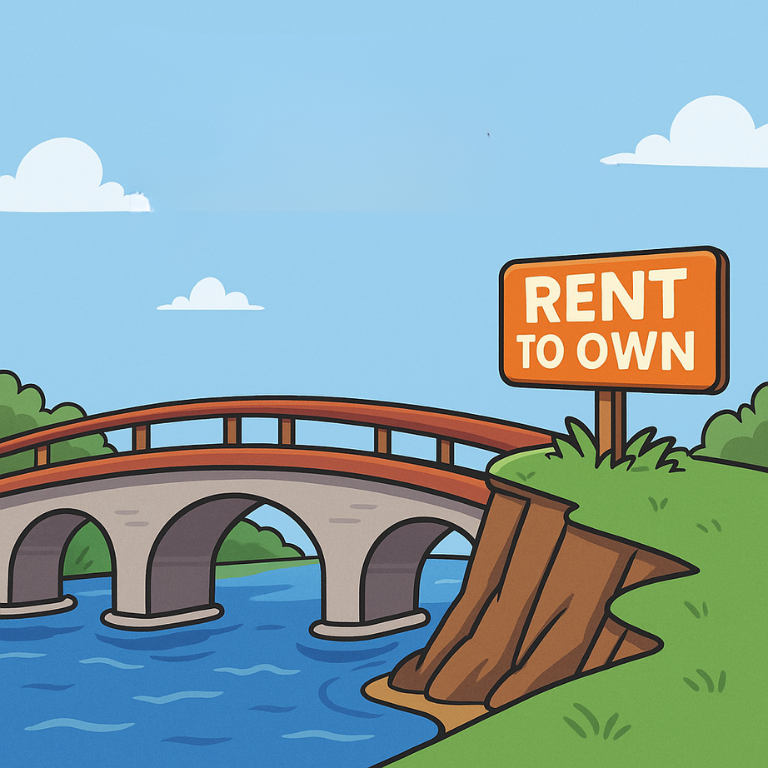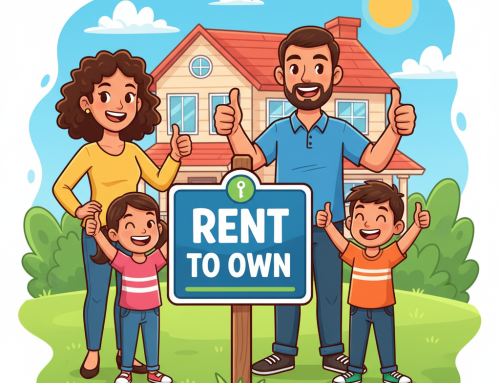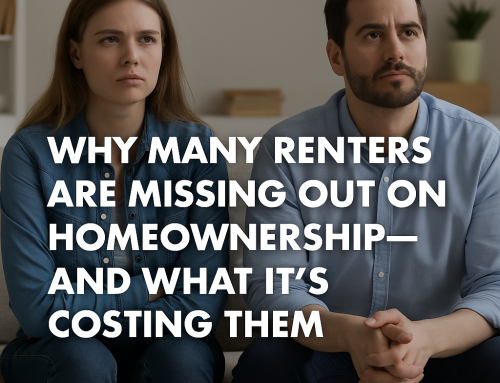Rent-to-Own vs Mortgage: The Ultimate Homebuying Showdown
I get asked “why would i do a rent-to-own if I can get a mortgage?” all the time. The trust is, you wouldn’t. You would do the mortgage every time. Rent-to-Own is not for people who can qualify for a mortgage today – even if you are being qualified for less you need – rent-to-own is not a solution. However, for those that are declined for a mortgage today, rent-to-own can offer an alternative to going back to the rental cycle. I go into details to explain the two options for those that aren’t too sure what they are or how the differ.
In today’s competitive and highly regulated real estate market, securing a traditional mortgage is often the biggest hurdle for aspiring homeowners. Factors like the Mortgage Stress Test and strict Debt-to-Income (DTI) ratio limits often leave qualified applicants temporarily sidelined.
But being declined by the bank isn’t a dead end—it’s a call to action to explore a new path.
This guide breaks down the critical differences between a traditional mortgage and a Rent-to-Own (RTO) program, helping you determine which route offers the quickest and most realistic path to owning your next home.
The Traditional Mortgage Path: High Hurdles (The “Direct Route”)
A mortgage is a loan from a financial institution (like a bank) that allows you to purchase a home immediately.
1. The Immediate Barrier: Down Payment & Credit Score
To qualify for a conventional mortgage, you must meet stringent criteria before you can close the deal:
- Down Payment: A minimum of 5% of the purchase price is typically required, and it must be saved in full upfront.
- Closing Costs: Closing costs can typically range from 1,5% to 4% of the homes purchase price, but can be higher for new builds.
- Credit Score: Lenders require a strong credit history, often demanding a minimum score of 680 or higher to secure the best rates.
- The Stress Test: Canadian lenders must qualify you at a higher-than-contracted rate, significantly lowering the amount you can borrow.
2. The Debt to Income Barrier: Affordability Today
The most common reason for mortgage denial is a high Debt-to-Income (DTI) ratio. Lenders measure your housing costs (GDS) and your total debt load (TDS) against your gross income. If your existing debts (car loan, credit card minimums, lines of credit) push your Total Debt Service Ratio (TDS) over the typical 40% threshold, your application will be denied, regardless of your savings.
The Rent-to-Own Solution: A Structured Bridge (The “Preparation Route”)
A Rent-to-Own (RTO) program is not a mortgage itself; it is a structured program designed to give you time to get you prepared to qualify for a traditional mortgage within a fixed timeframe (typically 3-4 years).
Instead of waiting years to save and repair, RTO allows you to move into your desired home now while you prepare your finances.
1. Building Your Down Payment While You Live There
The core difference in RTO is how the down payment is accrued.
- Initial Option Fee: You pay a small upfront fee (often 4-5% or more of the purchase price) to secure your exclusive right to buy the home later.
- The Rent Credit: A portion of your monthly rent payment is automatically set aside as a “monthly equity. ” This equity accumulates and is added to your intial Option Fee (down payment) over the term of the program.
The Benefit: You build a substantial down payment passively while living in the property you will eventually own.
2. Time to Fix Credit and Debt to Income
The RTO term is your grace period—a critical window of time dedicated to making you “mortgage-ready.”
- Credit Repair: Many RTO programs can provide financial coaching to help you strategically address credit issues, lower utilization, and build a positive payment history.
- DTI Reduction: Since you are focused on saving and debt payoff during the RTO term, you can systematically tackle high-interest debts, ensuring your DTI ratios are in line with bank requirements by the time you apply for the final mortgage.
Direct Comparison: RTO vs. Traditional Mortgage
Conclusion: Which Path Should You Take?
The choice is simple:
- Choose a Traditional Mortgage if you have excellent credit, a large down payment already saved, and a low debt-to-income ratio (TDS under 40%).
- Choose Rent-to-Own if you have stable income but need time to fix credit challenges, pay down existing debt, or gradually build a down payment.
For those facing denial, RTO is not a permanent alternative to a mortgage; it is a structured, strategic, and often faster path forward that ensures you meet the bank’s standards on your own terms.
Ready to Turn Your Denial into a Done Deal?
If you’ve been declined for a traditional mortgage, don’t give up your dream of homeownership. Click here to download our Free Credit Repair Checklist and learn how a Rent-to-Own program can put you in your dream house while you prepare to secure the financing you deserve.








